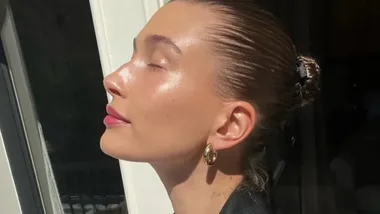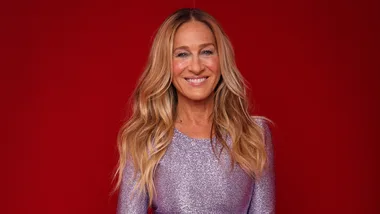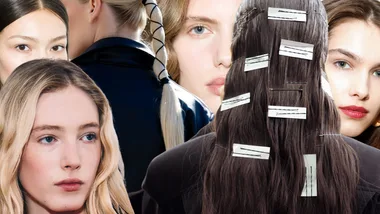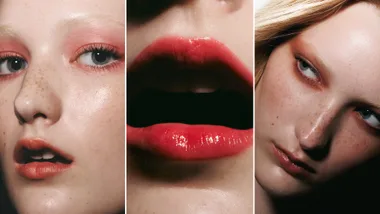Thanks to TikTok, new hair trends now come and go at the speed of light. (Think: ‘expensive brunette’, ‘hair slugging’…) Regardless of what’s going viral online, there’s one style that is always in style: shiny, healthy, bouncy hair.
In theory, healthy hair should be easy to achieve, but the reality is that there are a host of reasons—including genetics, hormones and environmental factors—why your hair may not be living up to its full potential. And key to all of this is starting with a healthy base – a healthy scalp is essential to achieving healthy hair.
If you’re confused about how to help your hair thrive, you’re not alone. With the help of a dermatologist, we answer some of your most-asked questions about hair and scalp health.
What Is The Cause Of Dandruff And How Can I Get Rid Of It, Fast?
Before you can target dandruff, it’s important to identify the root of the issue (pun intended). Typically, dandruff is caused by an unbalanced scalp microbiome, explains Dr. Leona Yip, dermatologist and fellow of The Australasian College of Dermatologists.
“Dandruff is not an infection that you catch,” says Dr. Yip. “It is caused by scalp microbiome imbalance and overgrowth of yeast. It is also thought to be related to scalp sebum (oil) production in which yeast thrives. Our skin reacts by shedding more skin cells, seen as scalp flaking, which is dandruff.”
Typical dandruff usually shows up as white flakes without any visible scalp redness, itchiness or irritation. When left unresolved, this can progress to a more severe form of dandruff called seborrheic dermatitis, which is recognisable by thicker yellow and greasy flakes. If your dandruff looks like the latter, it’s time to check in with your GP or dermatologist for a diagnosis and treatment plan.
For most people, an anti-dandruff shampoo with an active ingredient such as selenium disulphide should do the trick, like Dercos Anti-Dandruff DS Shampoo for Normal to Oily Hair. “Ingredients like selenium disulfide can rebalance the scalp microbiome,” Dr. Yip adds. This unique formula eliminates up to 100% of dandruff from first use1 and rebalances the scalp microbiome in just four weeks2. It also provides up to 6 weeks anti-relapse action3, keeping your dandruff under control for longer.
Tip: When using anti-dandruff shampoo, leave it on for a few minutes to ensure it has enough time to do its job.
I Think My Hair Is Thinning—Is This Normal?
There are many reasons why women may experience hair loss with some of the most common being stress, genetics and hormones. It’s important to remember that there are four stages of hair growth: first it grows, then rests, falls and regenerates. When this process is affected by health and lifestyle factors—such as a stressful event or drastic change in diet—it could take up to three months to recover.
If you are experiencing noticeable hair loss, book in with a health professional to make sure there isn’t anything more serious at play.
Is There Anything I Can Do To Stop My Hair From Looking Limp And Flat?
Flat, limp hair is often caused by a build-up of oil and styling products weighing the hair down. Wash your hair regularly to prevent build-up and avoid heavy, deep-moisturising conditioners that will make the hair appear greasy and flat. Consider subbing in an anti-dandruff shampoo to ensure your scalp microbiome is balanced, paving the way for healthy hair growth.
If your hair is naturally fine, speak to your hairdresser about how you can be strategic with your hairstyle to create the impression of more volume. Strategic layers can be your best friend, as well as balayage to add dimension and texture.
The Answer Lies In Your Scalp Health
Long story short: if your scalp is in good nick, your hair should follow. When the scalp is unhealthy or inflamed, dandruff is more likely, hair will shed more easily and won’t grow as well.
Some of the tell-tale signs of a scalp that needs extra care include:
- The presence of burning, itchiness or discomfort
- Redness flaking spots or sun damage
- Excessive hair shedding.
If you’re concerned about any of the above or have noticed any new or growing lumps on your scalp, avoid self-diagnosing and book in with a GP or dermatologist.
Brought to you by Dercos.
1Consumer test on 262 subjects after 2 weeks of regular use.
2Cosmeto-clinical study with follow up of the main microorganisms involved in dandruff, 56 subjects with 3 applications a week for 4 weeks.
3Cosmeto-clinical study on 45 subjects after 4 weeks of use and 6 weeks of remanence.










